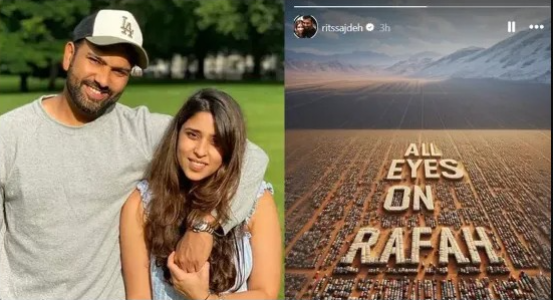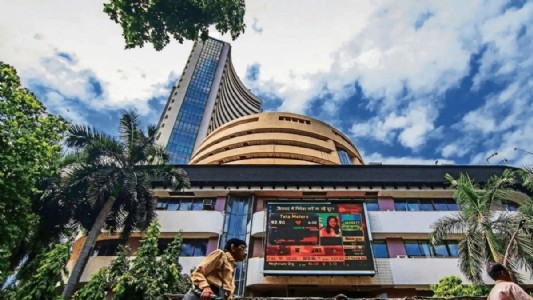Udayagiri Caves, the arcane caves in Madhya Pradesh
The site at Udayagiri Caves was the patronage of Chandragupta II; protected by the ASI, these are probably the only caves from the Gupta period
Total Views | 222
Monuments of past centuries are one of the most important and visible aspects of history and our cultural legacy, that make us aware of past and gives a sense of identity & meaning which can’t be fabricated. But there are many, many architecture / cultural marvels, centuries or millennia old, that aren’t so well known or frequently visited by people, which still deserve the same kind of recognition. Today, let us explore an example of just that.
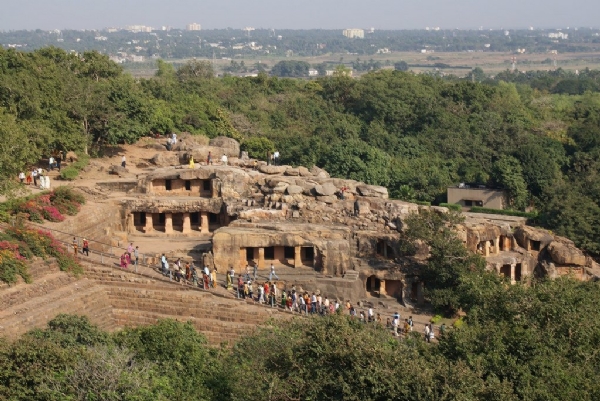
The Udayagiri Caves complex consists of 20 caves, of which one is dedicated to Jainism and all others to Hinduism. The Jain cave is notable for one of the oldest known Jain inscriptions from 425 CE, while the Hindu Caves feature inscriptions from 401 CE.
The caves were produced on the northeast face of the Udayagiri hills. They have a square plan. The caves were numbered in 19th century by Alexander Cunningham; he reported only 10, lumping some of the caves together. He numbered the Jain cave as number 10. Later studies identified the caves separately, and their number rose to 20.
Cave 1 is the southernmost cave & is false as one of the sides and its front is not of original rock but added in. Its roof is integrated from the natural ledge of the rock. Outside, there are four square pillars. The back wall of the cave has a deity carved into the rock wall, but this was damaged by chiseling later at some point.
Cave 2 is still on the southern foothill, isolated from the main cluster of the caves. Its front wall was damaged, and the interior has been eroded by weather. It is about in area and the only traces of two pilasters are visible, along with evidence underneath its roof of a structural mandapa.
Cave 4 was named the Vina cave by Cunningham. It presents Shaiva and Shakti themes. It is an excavated temple of about 14 feet by 12 feet. The cave has a style that suggests that it was completed with the other caves. The doorway frame is plain but it is surrounded by bands of rich carvings. River goddesses Ganga and Yamuna flank the doorway on two short pilasters with bell capitals.
The temple is dedicated to Shiva. The sanctum contains an ekamukha linga, or a linga with a face carved on it. Outside its entrance, in what was a mandapa and now is eroded remnants of a courtyard are matrikas (mother goddesses), eroded likely because of weathering.
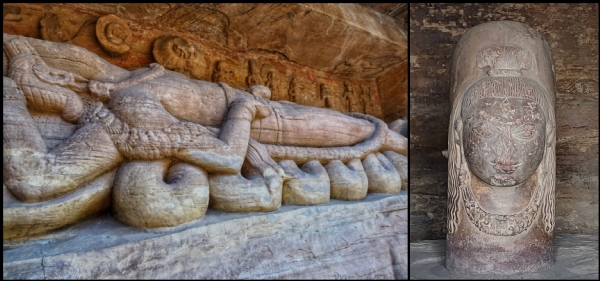
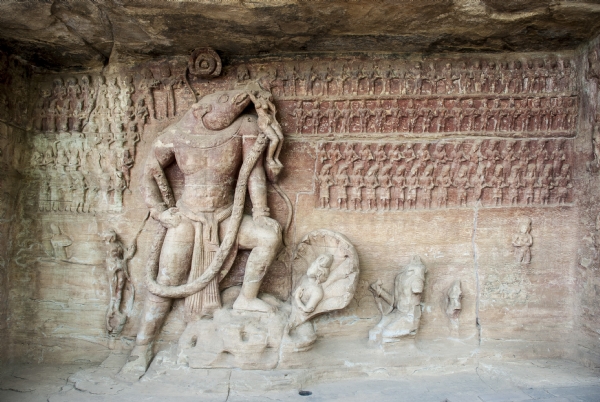

The Udayagiri Caves are a series of rock cut caves carved into a 2 km long sandstone ridge, near Vidisha, Madhya Pradesh, in the early year of 5th century CE. These one of the earliest cave temple sites in India - attributed to the ‘Golden Age’ of Hindu revival, marked by the change from Vedic to idol worship - around 1,500 to 1,700 years ago.
These are 20 rock-cut caves here, dating early 5th century CE. The caves contain some of the oldest surviving Hindu temples and iconography. Apart from Hinduism, Vaishnavism, Shaktism and Shaivism iconography are also found here.
The site at Udayagiri Caves was the patronage of Chandragupta II. Protected by the archaeological survey of India, these are probably the only caves from the Gupta period.
The Udayagiri Caves complex consists of 20 caves, of which one is dedicated to Jainism and all others to Hinduism. The Jain cave is notable for one of the oldest known Jain inscriptions from 425 CE, while the Hindu Caves feature inscriptions from 401 CE.
The caves were produced on the northeast face of the Udayagiri hills. They have a square plan. The caves were numbered in 19th century by Alexander Cunningham; he reported only 10, lumping some of the caves together. He numbered the Jain cave as number 10. Later studies identified the caves separately, and their number rose to 20.
Cave 1 is the southernmost cave & is false as one of the sides and its front is not of original rock but added in. Its roof is integrated from the natural ledge of the rock. Outside, there are four square pillars. The back wall of the cave has a deity carved into the rock wall, but this was damaged by chiseling later at some point.
Cave 2 is still on the southern foothill, isolated from the main cluster of the caves. Its front wall was damaged, and the interior has been eroded by weather. It is about in area and the only traces of two pilasters are visible, along with evidence underneath its roof of a structural mandapa.
Also Read | Bhimkund, the mystical bottomless water lagoon in MP
Cave 3 is the first of the central group or cluster of shrines and reliefs. It has a plain entrance and a sanctum. Traces of two pilasters are seen on both sides of the entrance and there is a deep horizontal cutting above which shows that there was some sort of mandap in front of the shrine. Inside there is a rock-cut image of Skanda, the war god. The Skanda sculpture was vandalised. The surviving remnants show an muscular torso, with Skanda's weight distributed equally on both legs.
Cave 4 was named the Vina cave by Cunningham. It presents Shaiva and Shakti themes. It is an excavated temple of about 14 feet by 12 feet. The cave has a style that suggests that it was completed with the other caves. The doorway frame is plain but it is surrounded by bands of rich carvings. River goddesses Ganga and Yamuna flank the doorway on two short pilasters with bell capitals.
The temple is dedicated to Shiva. The sanctum contains an ekamukha linga, or a linga with a face carved on it. Outside its entrance, in what was a mandapa and now is eroded remnants of a courtyard are matrikas (mother goddesses), eroded likely because of weathering.

Cave 5 contains the much-celebrated Varaha panel of Udayagiri Caves. It is the narrative of Vishnu in his Varaha or man-boar avatar rescuing goddess earth in crisis.

A Hindu legend depicts goddess earth in a crisis after she has been kidnapped by demon Hiranyaksha, where neither she nor the life she supports can survive. She is drowning in the cosmic ocean. Vishnu emerges in the form of his man-boar avatar. He descends into the ocean, finds her, she hangs onto his tusk, and he lifts her out to safety. The good wins, the crisis ends, and Vishnu once again fulfils his.





